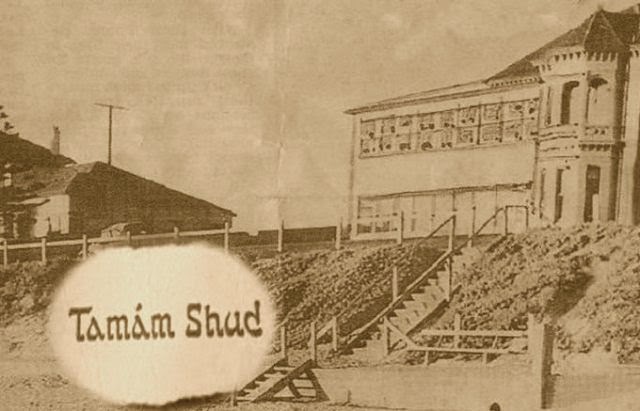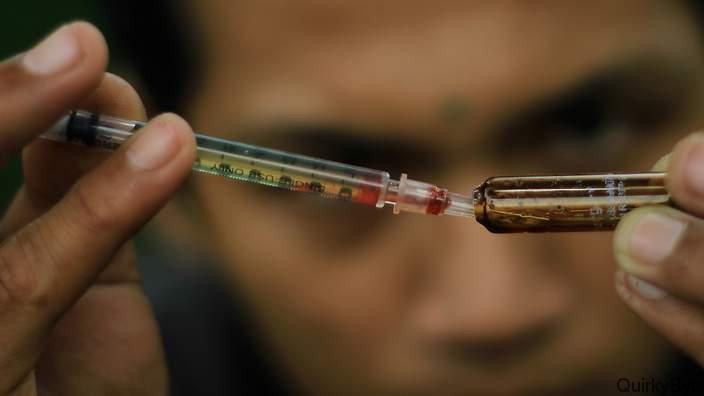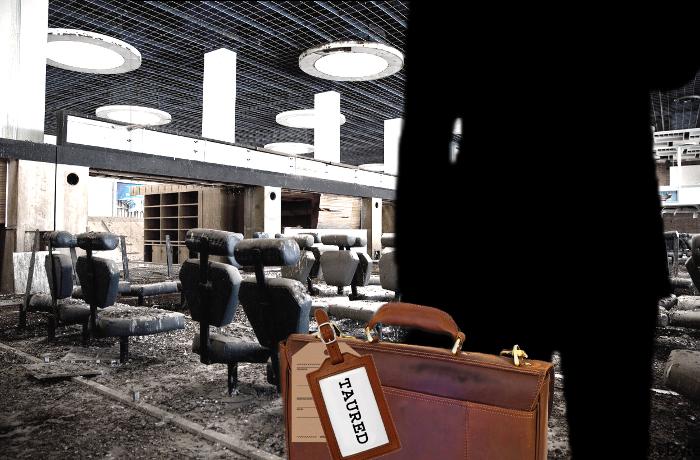The Tamam Shud Mystery

Considered to be one of Australia’s most profound mysteries, the Tamam Shud Case revolves around an unidentified man found dead on 1st December 1948 on Somerton beach in Adelaide, Australia.
Six weeks later, a suitcase apparently containing the same man’s property was retrieved from Adelaide Railway Station’s cloakroom, where it had been deposited at around 11 A.M. the day before his death. However, apart from three items marked “Kean”, “Keane”, and “T. Keane” (nobody with that name was missing), nothing indicating the man’s identity was found in those belongings. Tucked into a tiny fob pocket in the dead man’s trousers was a small scrap of printed paper ripped out of a book: mysteriously, it contained the Persian phrase Tamam Shud (i.e. “It Is Ended”, or “The End”).
This was quickly recognized as being the final words of the Rubaiyat of Omar Khayyam, quite a popular book at the time. And then some months later, a particular copy of the Rubaiyat surfaced with part of the final “Tamam Shud” page removed: it was claimed that the book had been thrown into a car parked near the same beach where the man had been found.
The mystery of the case was compounded by the discovery of some faint writing on the rear page of the book. This included a local phone number (“X3239″), and several lines of cipher-like writing. Careful analysis of this suggests that it is more likely to be an ‘acrostic’ (i.e. the first letters of a text or poem, possibly as a mnemonic aid for remembering it) than a cipher, because its letter frequencies are more similar to the letter frequencies of the first letters of English words than to those of normal English text.
The phone number X3239 turned out to be that of a nurse called Jessica Ellen Thomson (née Harkness) living at 90A Glenelg Street, not far from the same beach. When quizzed by the police at the time, she said that she did not know who the deceased was. All the same, when she was later shown the plaster cast bust of the dead man, she was “Completely taken aback, to the point of giving the appearance that she was about to faint” (Feltus, p.178), giving rise to a strong suspicion that she knew more than she was letting on.
She did tell police that she had independently given a copy of the Rubaiyat to a man called Alfred Boxall, who she had met at the Clifton Gardens Hotel in Sydney in 1944 while she was training to be a nurse at the nearby Royal North Shore Hospital. However, Boxall quickly proved to be very much alive and living in Maroubra (and not the dead man found on the beach), leaving both him and the police somewhat baffled.
Up until Thomson’s death in 2005, this was as much as anyone knew. However, in a 2013 interview for the Australian “60 Minutes” current affairs TV programme, her daughter Kate revealed that her mother had told her that she indeed did know more about the Somerton Man, but had deliberately not revealed it to police. She also revealed that her mother was able to speak Russian; suggested that her mother may have been involved in some spy-related activity; and that her mother thought that the whole Somerton Man affair was above “a State Police level”. This has, of course, unleashed a torrent of speculation, though with not a shred of external evidence to back any of it up.
Also, one unusual feature of Boxall’s copy of the Rubaiyat is that the nurse had apparently signed it “Jestyn”, though her name at the time was actually Jessica Ellen Harkness.
Gerry Feltus confirmed that when many years ago he talked to various RNSH nurses who knew Jessie Harkness, they also said that she “sometimes referred to herself as Tina“. However, getting from there to “Jestyn” still seems something of a stretch (if not an outright leap): so perhaps there may yet be more to be uncovered here.
The Sealed Room
In many ways, the whole Tamam Shud case is a perfect murder mystery (‘murder’ insofar as the coroner suspected poisoning but was not able to prove it), to the point that there’s no way of knowing whether a murder actually took place (many people propose suicide as an explanation for many features of the mystery), who the victim was, what the murder weapon was (if indeed it was a murder), or who the perpetrator was.
Yet a curious feature is that despite having been found with his head propped up against the sea wall, the dead man’s body had extensive lividity (blood pooling) at the back of the head, suggesting that his body had spent some considerable time after dying with the head in a quite different position (i.e. lying on its back face up, yet with the head slightly below the rest of the body). Oddly, there was a half-smoked cigarette in his mouth on the beach, which (when taken together with the lividity) would strongly suggest that the corpse had been actively posed by a person or persons unknown. This combination of facts would seem to rule out suicide.
Even so, useful and actionable facts about the case remain painfully few, very far between, and continue to be difficult to connect with each other. It’s true that if we could identify the man himself, we might possibly gain enough context to understand his cipher: but based on the evidence we currently have, I think the odds would seem to be strongly against either mystery being resolved anytime soon.



